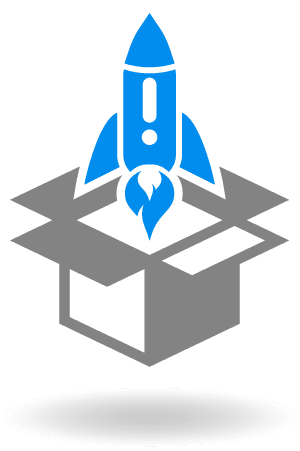Getting Started the Right Way
Your organization has decided to outsource customer care. The paperwork is signed, the expectations are set, and a launch date is on the calendar. It is now time to put the plan in motion. Whether the move is related to tech support, sales, a help desk, or any combination of those and other factors, what follows will apply to each instance. In fact, what follows is as vital as the outsourcing program itself. The actions taken between this point and going live will significantly impact the outcome.
The Foundations of a Partnership
 No matter the application, outsourcing typically involves a tradeoff – an organization is giving up a measure of control over some part of its operation in return for subject matter expertise in that area. This is most pronounced when outsourcing touches any client’s most valuable asset – its customers. We put a great deal of emphasis on client involvement during the implementation process; one might say it’s a requirement for success. When the client is engaged, we’re no longer a vendor; we are on the road to being a partner with a vested interest in the outcome.
No matter the application, outsourcing typically involves a tradeoff – an organization is giving up a measure of control over some part of its operation in return for subject matter expertise in that area. This is most pronounced when outsourcing touches any client’s most valuable asset – its customers. We put a great deal of emphasis on client involvement during the implementation process; one might say it’s a requirement for success. When the client is engaged, we’re no longer a vendor; we are on the road to being a partner with a vested interest in the outcome.
Levels of participation often vary based on a company’s experience with outsourcing. Businesses that have never done it before tend to be more hands-on than those who have. In either case, the implementation plan begins by looking at the end state – what does success look like so that both sides can recognize it? Our approach includes an in-depth discovery phase. We ask questions. A lot of them. About everything. Because every program has several moving parts, and each client is trying to solve different things, sometimes multiple things.
For instance, a first-time client may be outsourcing because the company’s growth – and the corresponding growth in service demand – became too much or too expensive to handle internally. In other cases, organizations want to switch from an incumbent provider or add a partner to compare performance. The discovery questions answer what the client wants to achieve, what KPIs are most important, and how service delivery must be aligned to best support the company’s business goals.
Staying On Track
 Where discovery works to set the expectations, the projected launch date puts the process for achieving them in motion. Much like defining success at the outset, clients typically have a launch date in mind. Sometimes, it’s a hard date driven by business reasons, and in other cases, it is a preference with a buffer of plus or minus a few days or a week. Typically, implementation spans 4-6 weeks, including recruiting, hiring, and training, getting the right equipment and systems in place, setting milestones, and establishing a meeting cadence to keep stakeholders on track.
Where discovery works to set the expectations, the projected launch date puts the process for achieving them in motion. Much like defining success at the outset, clients typically have a launch date in mind. Sometimes, it’s a hard date driven by business reasons, and in other cases, it is a preference with a buffer of plus or minus a few days or a week. Typically, implementation spans 4-6 weeks, including recruiting, hiring, and training, getting the right equipment and systems in place, setting milestones, and establishing a meeting cadence to keep stakeholders on track.
There is an emphasis on peer-to-peer communication, i.e., our IT people working with the client’s IT people, HR with HR, and so forth. Some departments will be involved for the duration of the process and others for a small portion of it. Beyond that, these meetings set the tone for the interactions that follow after a program goes live, building on the trust and confidence that have been established to that point.
It should be noted that an implementation plan acts as a living document. It is given to the client in a shared format that allows for review, modifications, and updates as events dictate. There is usually some flexibility built into the plan to account for any drifting outside the lines, which can include tasks being completed ahead of schedule or any that are moving more deliberately.
The launch date marks the end of the partnership’s beginning as implementation extends into the early days and weeks as the service and support team finds its footing and reaches a steady state of production. Every initiative includes the things you don’t know that you don’t know; in other words, the contingencies that are only visible once a program is underway. If communication has been constant and comfortable during implementation, any issues arising after the fact should be quickly resolved.
The Aftermath
 The thing about a partnership is that it is enduring. You not only have a dedicated implementation manager during the run-up to launch day, but you also have a dedicated client advocate for every day that follows. This person enters the scene once production has begun, helping the team toward its performance targets during the initial ramp of a program, and sticks around afterward to provide a ready point of contact in addition to the program manager. The advocate’s role is just what the name implies – to be the voice of the client on any matters that require attention, furthering the relationship that began even before implementation began.
The thing about a partnership is that it is enduring. You not only have a dedicated implementation manager during the run-up to launch day, but you also have a dedicated client advocate for every day that follows. This person enters the scene once production has begun, helping the team toward its performance targets during the initial ramp of a program, and sticks around afterward to provide a ready point of contact in addition to the program manager. The advocate’s role is just what the name implies – to be the voice of the client on any matters that require attention, furthering the relationship that began even before implementation began.
Implementation can be misconstrued as little more than marshaling the necessary headcount and hitting the timelines involved, but it goes much deeper to form the core of the connection between client and provider. It lays out the expectations and represents the blueprint for achieving them, revising them as the program evolves and building onto the additional framework as needed. Each new program put in place is also an opportunity to test the fundamentals of the plan, confirm its viability, and incorporate any improvements made along the way.
Takeaways
 More client participation is better than less. The level of involvement is often a determining factor in how smoothly implementation goes and what the relationship looks like afterward. The plan is laid over the client’s expectations and supported by a strategy for reaching the targeted goals.
More client participation is better than less. The level of involvement is often a determining factor in how smoothly implementation goes and what the relationship looks like afterward. The plan is laid over the client’s expectations and supported by a strategy for reaching the targeted goals.
Implementation requires time and attention to detail. A great deal of information is packed into a relatively short time of several weeks, but the results will reflect the level of commitment that went into the process. This is when the relationship is formed, as the outsourcing provider and client learn about each other, the respective organizational cultures, customer preferences, what the brand being supported stands for, and so forth. This is more than putting bodies in seats; it’s a dual, ongoing effort to address an issue, support business goals, and build a customer-focused atmosphere.
Relationships in business or life tend to fail for the same reasons – mistrust, lack of communication, not having shared goals, and different priorities. Likewise, they succeed for the same reasons, which is why we emphasize outsourcing as a partnership. Support agents are more than a problem-resolution team; they are the front-line representatives of the brand. Open communication, flexibility when needed, a commitment to mutual support, smoothly handling the occasional issues that may arise, and working in unison go a long way toward setting the conditions that create customer satisfaction, leading to customer retention and inspiring customer loyalty.


















































